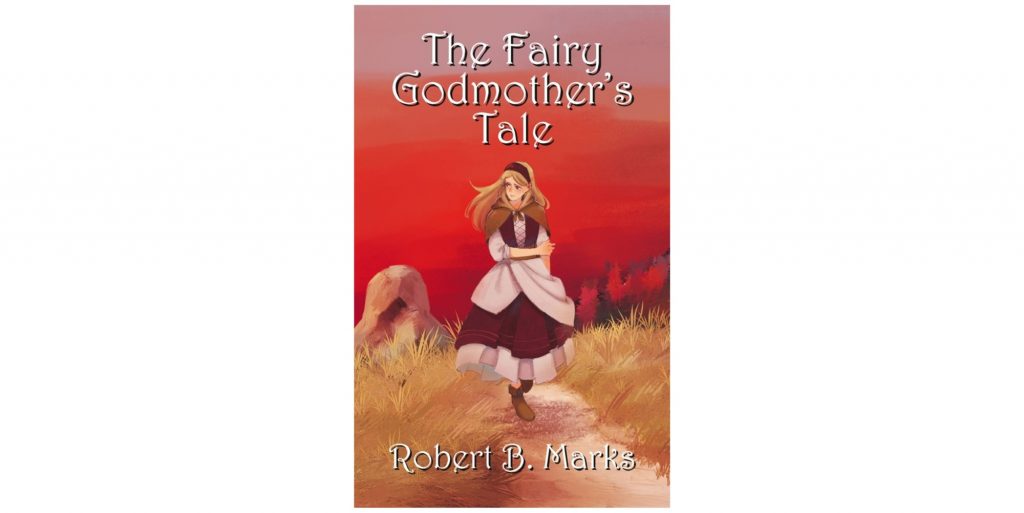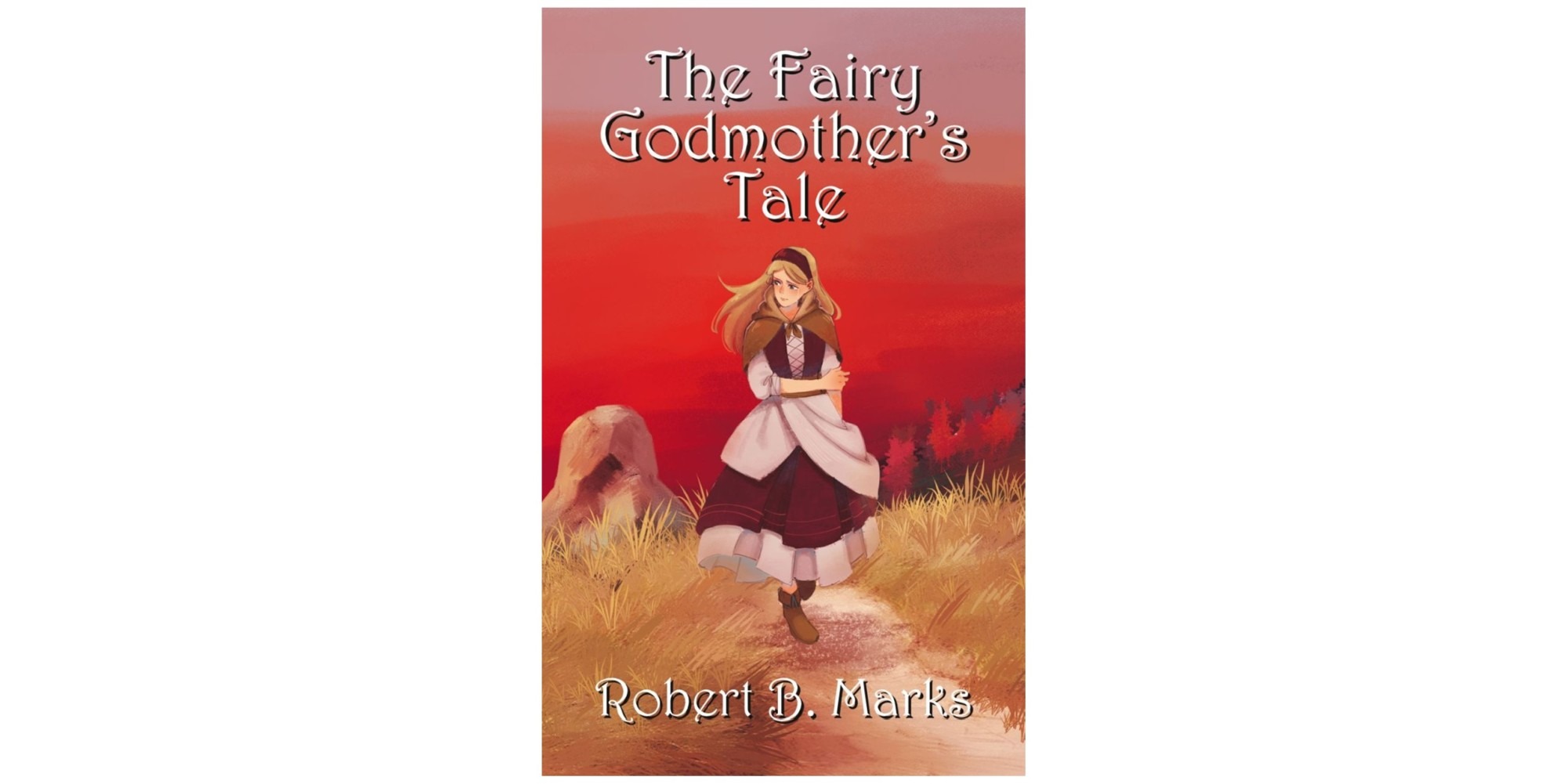Everybody knows the fairy tales of Cinderella, Sleeping Beauty, Snow White and many others. But did you know that these fairy tales were not always the light-hearted, whimsical stories we tell today. They have been heavily sanitised over the years, making them stories that children love. The original versions were very much darker, many collected by the Brothers Grimm or rooted in ancient folklore. The original fairy tales were very often brutal, cautionary tales filled with violence, moral dilemmas, and eerie supernatural elements. Cinderella’s stepsisters mutilated their feet, Sleeping Beauty’s curse involved far grimmer implications, and Little Red Riding Hood wasn’t always saved. The Fairy Godmother’s Tale by Robert B. Marks offers a fascinating return to the darker origins of fairy tales, inviting readers into a world where magic isn’t always kind, and destiny may not be as forgiving as we once believed.
Fairy tales are not necessarily tales about fairies, they are much more folklore – stories that have some grounding in truth that have been passed on through the generations, embellished and twisted along the way.
The Fairy Godmother’s Tale is a captivating journey into the origins of such tales, blending history, fantasy, magic and whimsy and is a really enjoyable read. It takes readers on an adventure through the life of Elisa who discovers she can grant people their deepest wishes.
Once upon a time in a faraway land, actually a forgotten island kingdom in the Baltic Sea, lived a humble bookbinder and his family. His daughter, 15 year old Elisa, discovers that she has a rather unique talent – she can see people’s deepest wishes and has the power to grant them. But her first attempt at granting wishes dramatically backfires as she attempts to grant every single wish on the island. This causes a revolution that destroys everyone and everything she loves.
Upon reflection, to redress her actions she begins a penance, travelling throughout Germany, in which she uses her power wisely to help people (people like Ella, you might know her as Cinderella). But life isn’t simple and her journey takes her into a conflict with an evil wish-granter and she develops a friendship with the devil.
Overall, I really enjoyed reading The Fairy Godmother’s Tale. It is a fantastic story that incorporates several well-known and loved fairy tales, just not in the sanitised safe-for-children ones we all read today, but the original darker and sometimes terrifying tales (such as Grimm’s Fairy Tales). As well as crafting a story around some of these favourite fairy tale characters from these now children’s reading staples, the story is woven around German history, including the Napoleonic wars. This is one fairy tale that you would not read to young children.
While this story revolves around fairy tales, it features a twist in that the story focus on a fairy godmother rather than other characters. But this fairy godmother is not just a passive wish granter, she struggles and wrestles with her conscious, her immorality and the weight of magic, morality, and the unintended consequences granting wishes can bring – after all, every action has a reaction.
The Fairy Godmother’s Tale has a richly woven narrative. I found it to be a fantastic fantasy adventure of good vs evil, religion, morality and even the horrors of war. The blend of the dark fairy tales with violence, murder and history creates an intriguing and fascinating tale, a story that really draws you in.
As you turn the pages, you will recognise quite a few fairy tales (and there are lots that you might not) that shape the story and history buffs will recognise significant periods in German and European history.
Elisa is the protagonist of the story, and she is a very rich and compelling character. Starting the story as a 15 year old naïve girl, the story follows her rise to becoming a powerful wish-granter, or fairy godmother. Then there are characters such as Clever Gretel and the Devil who add a good depth, intrigue and contrast to the story.
The story is very engaging, one that immerses the reader in the narrative. Marks’ ability to weave the fantasy and magic of fairy tales with historical elements creates a unique and enchanting tale which brings the story to life. While set between the years 1658 to 1810, the story isn’t told in an old-fashioned way, even when going into accurate details about war. It is a very descriptive story that makes you feel that you could be there travelling thorough Elisa’s world.
Fairy tales all have their own themes and The Fairy Godmother’s Tale explores several of them including the consequences of actions, taking responsibility for them, and ultimately redemption. It examines the idea that even those who have the best intentions (like making everybody happy by granting their wishes) can make mistakes, but it’s how we learn from and rectify these mistakes that makes us grow as people.
The Fairy Godmother’s Tale is a beautifully crafted, well-written, thoroughly researched and fascinating story, but it is definitely not a fairy tale for young children. It is a story that will appeal to fans of fantasy and fairy tales (the original darker ones), and even history buffs. It really does offer readers a fresh perspective on the origins of these beloved fairy tales. This book is a must-read for anyone who enjoys a blend of history, fantasy and a great story.
I loved The Fairy Godmother’s Tale, it isn’t a fluffy fairy tale where everybody lives happily ever after – at times it is violent and it does have some swearing but is a fantastic enjoyable read.
Rating: 5/5
RRP: £21.95 (Paperback) / £3.86 (Kindle)
For more information, visit robertbmarks.com. Available to buy from Amazon here.

PUBLISHER:
PUBLICATION DATE:
ISBN:
PRINT LENGTH:
COVER ART:


